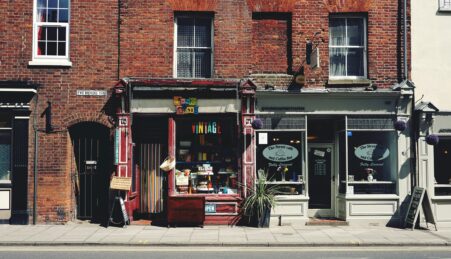By Simran Kaur Takhi
As a young female growing up today, nothing saddens me more than the existence of a brand that has so many damaging implications for girls globally – Fair & Lovely.
For those who haven’t heard of this brand, Fair & Lovely is credited as being the first ever skin-lightening cream that promises to reduce skin tone by several shades. Since its launch in India in 1975, the company boasts impressive statistics, making up 70% of the skin-whitening market in India in 2006.
So what? People might say. If people can change their hair and eye colour, how is lightening their skin any different?’ In this article, I aim to highlight the problems with the brand and skin-lightening treatments in general in terms of the perpetuation of the stigmatisation of the darker skin tone in Indian culture.
Let’s start with the basics. The name of any brand is at the heart of its marketing strategy and this is no surprise considering the power a name can bring. Dove uses bird-related imagery to sell their products, Walkman cleverly and simply just noted what their goods enable you do. It appears that Fair & Lovely’s strategy is to cast shadow on a population who by and large is in contrast to what the brand states. Fairness must equate to loveliness, it seems. Isn’t that what Fair & Lovely is essentially saying? That you cannot be ‘lovely’ unless you are of the lighter skin tone? Unfortunately, in parts of Asia, historically, darker skin tones have had degrading connotations whereas lighter skin is to be championed.
Where does this affinity for fairer complexions come from? It is clear that the caste system plays a part in this. That is, the hierarchy of social class as determined by the job role ancestors once occupied. It was apparent that those who occupied jobs that were less skill-orientated such as sewage workers, also known as the ‘Dalits’, had darker skin tones compared to those who occupied roles that were seen as more prestigious in society, such as priests and teachers, known as the ‘Brahmins’. Thus, darker skin became associated with ‘lower castes’ and thus lower social status.
According to an article published in the Financial Times, “A fair skin is like education, regarded as a social and economic step up”. And this all stems from the draconian nature of the caste system. It’s as if a lighter skin tone attributes to one’s reputation and you only have to earwig a conversation at a social gathering to hear the legacy the system still holds. For example, utterances I happened to have hard at various gatherings include, “She’s lovely, thin and fair-skinned”. Or, “I was worried that because she has darker skin, this would affect whether another one of our lot would want to marry her.” Yes, that’s right, apparently lighter skin tones correlate with one’s marriage prospects and funnily enough, on the Fair & Lovely brand’s website, they say just that:
“Fair & Lovely has inspired women to go for their dreams, when society expected women to marry mostly via arranged marriages, Fair & Lovely gave them hope that women could marry by choice.”
Of course, this is a ridiculous viewpoint and reassuringly, I have found that such comments often derive from women who are in the 50 + age bracket rather than the youth of today and this perhaps nods to a change.
And there definitely is a cultural change happening in the East in regards to such draconian attitudes to skin colour in the form of campaigns spurred on by social media and important figures. It is important to mention here the role of India’s booming film industry Bollywood plays in reinforcing such artificial beauty standards. It is a commonly known fact that that many of Bollywood’s leading figureheads all have one thing in common: they have lighter skin and many of them also star in advertisements for the brand.
Waves of young girls are watching blockbusters where the women who dominate them are all of a particular aesthetic. This combined with the existence of Fair & Lovely, with its celebrity endorsements and all round glamorous image, means it is no wonder that there exists such a desire to change one’s colour and subsequently, boost the profits of skin-whitening brands.
2016 saw the rise of the #unfairandlovely campaign on Twitter, kick-started by black photographer Pax Jones who took photographs of her darker-skinned colleagues as a rebellion against everything that Fair & Lovely stands for, thus encouraging thousands of other women to do the same on various social networking sites and provoking discussion whilst doing so.
Whilst there is a shift in attitudes in regards to black not being seen as beautiful, more work needs to be done in order to raise awareness and stop this white skin ideal from further infiltrating popular culture, particularly in less economically developed countries. Until we see at the very least, a decline in the profits of skin-whitening treatments such as that of Fair & Lovely, our mission remains large.





Leave a reply